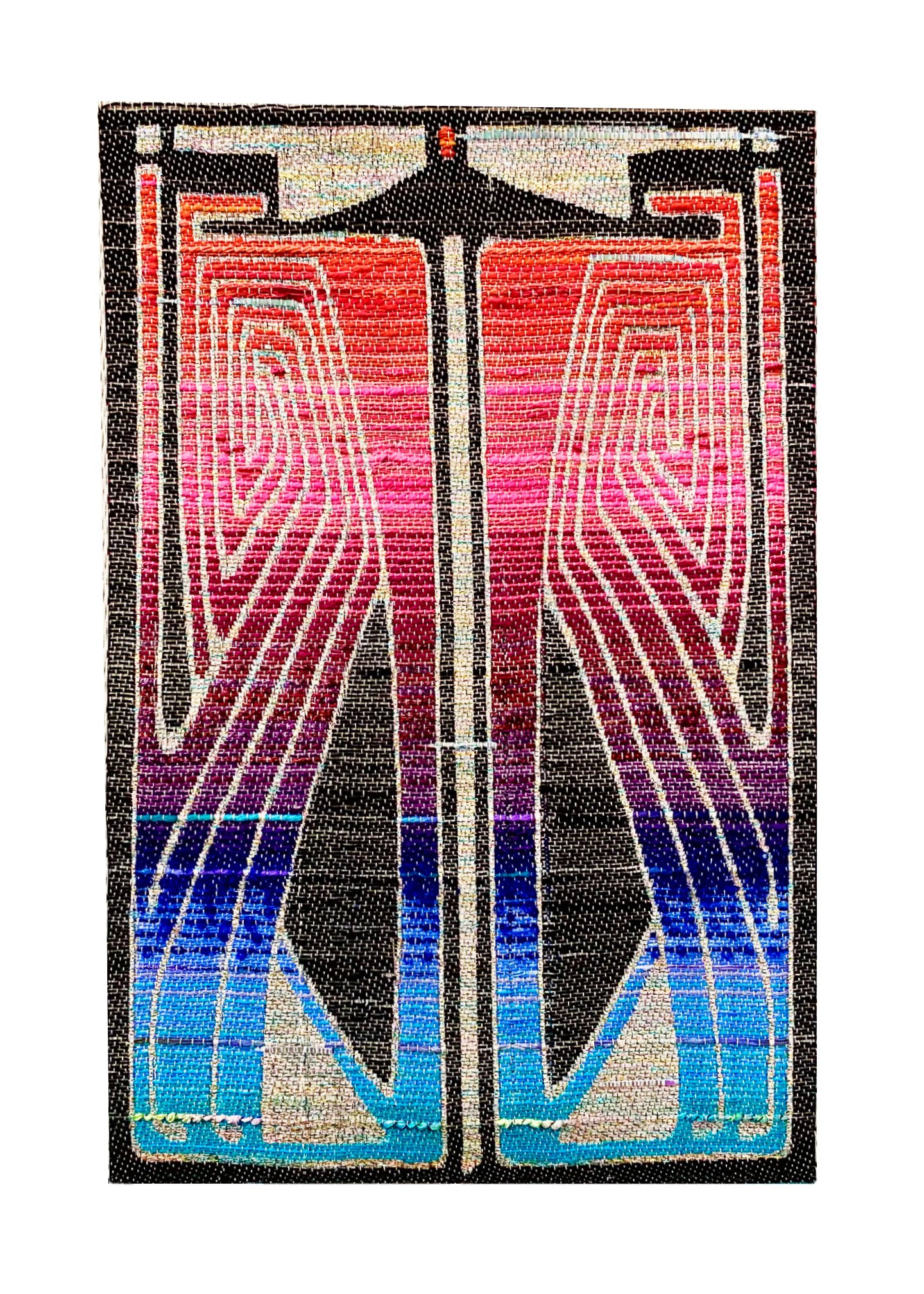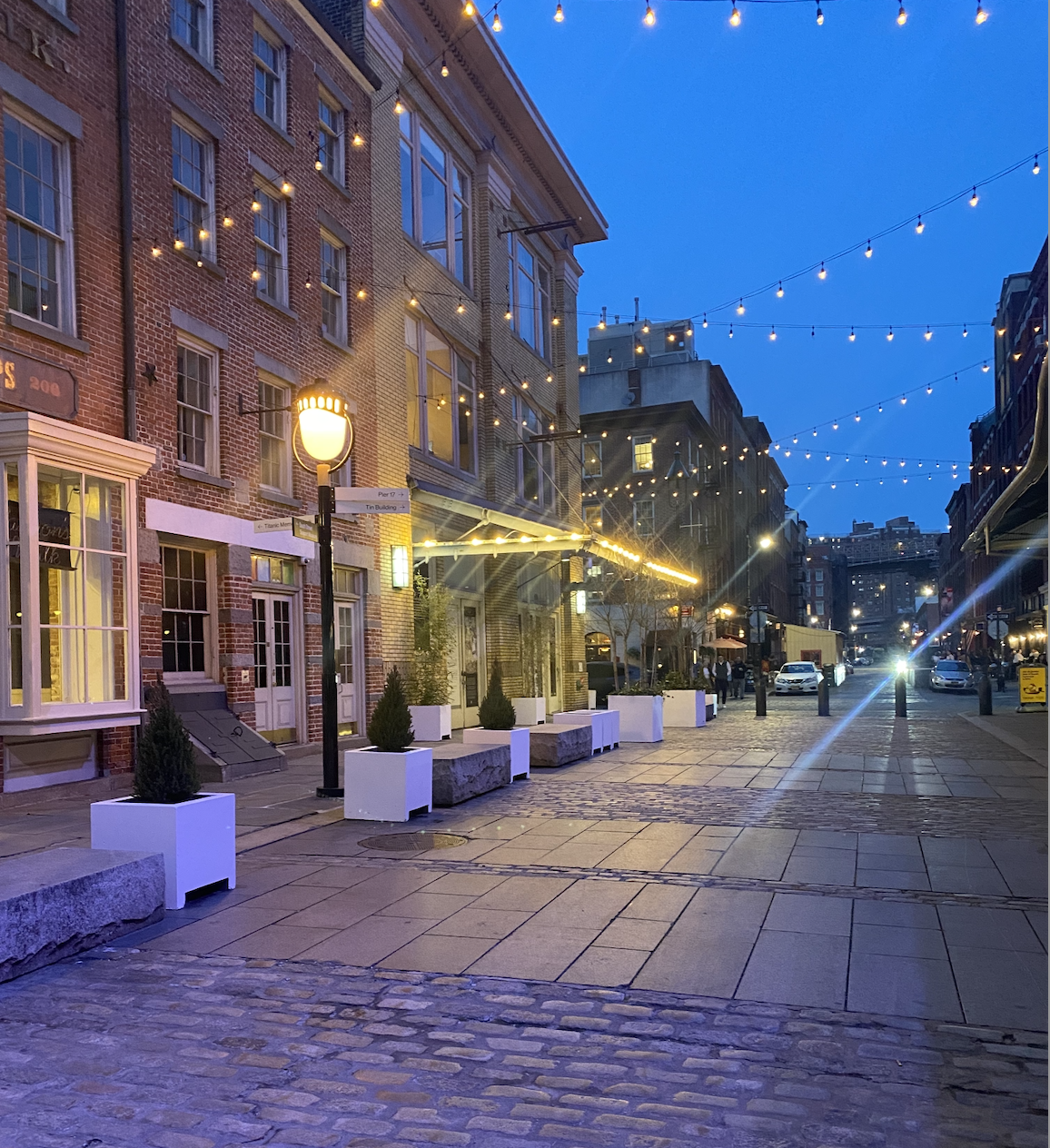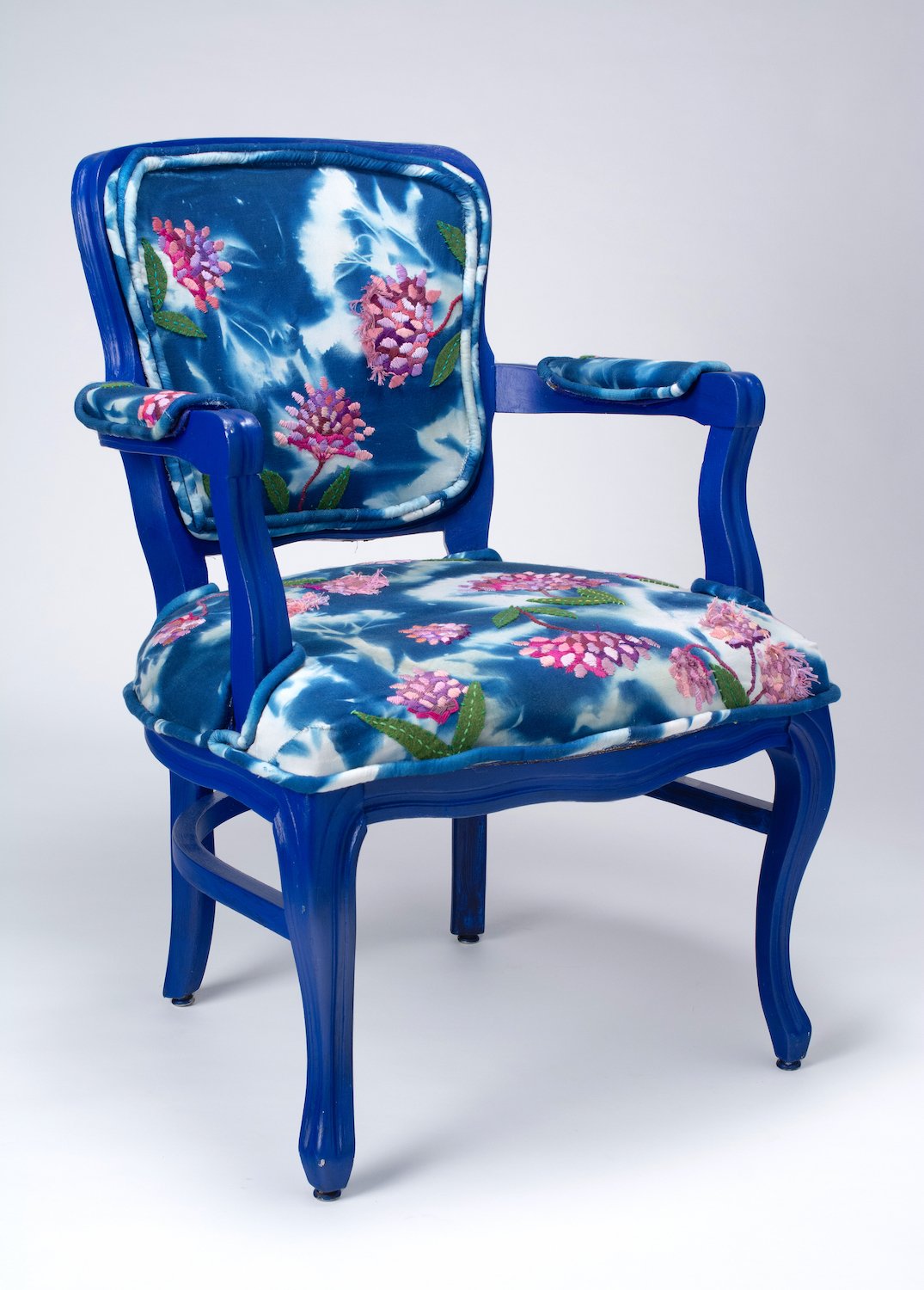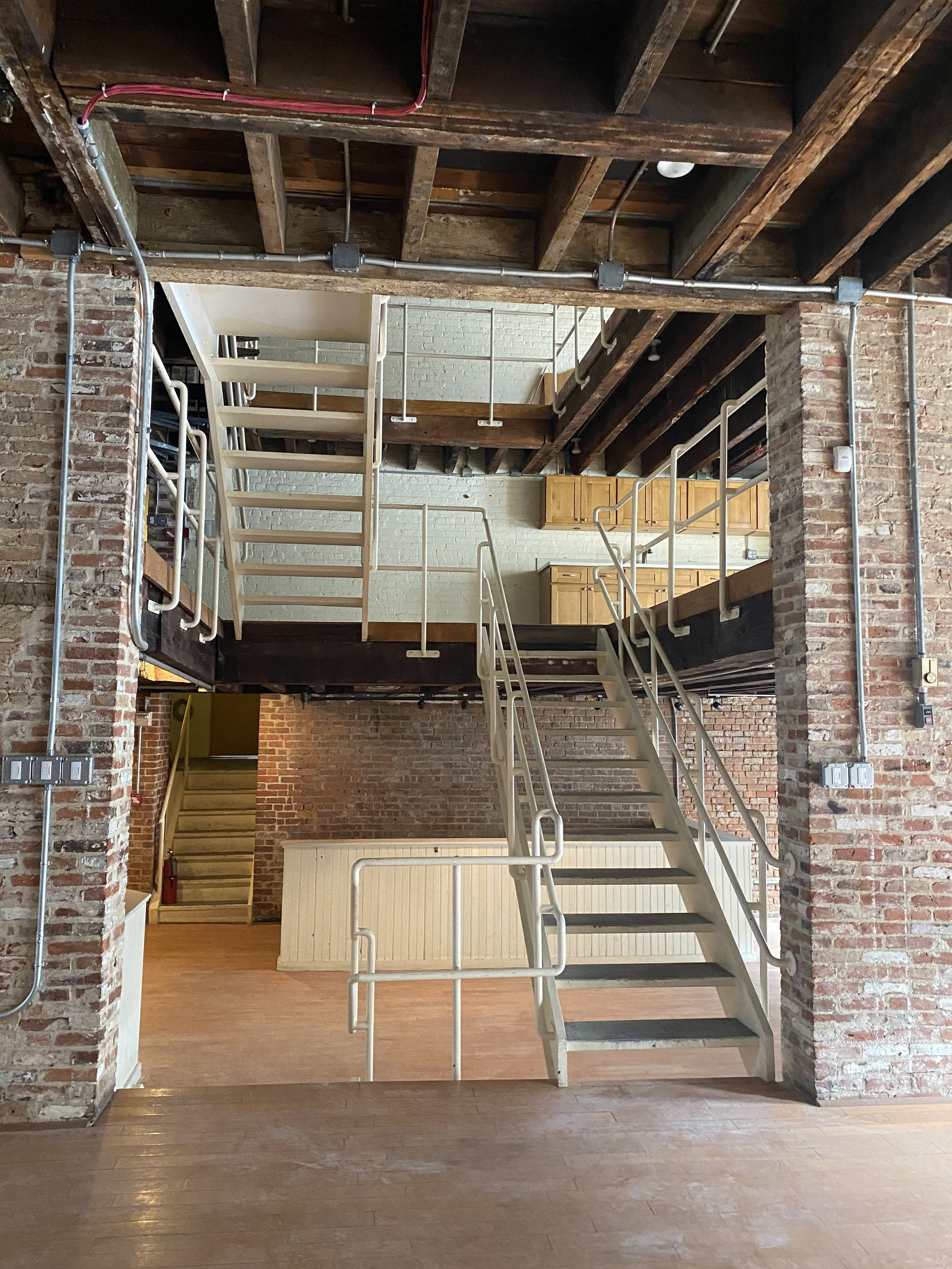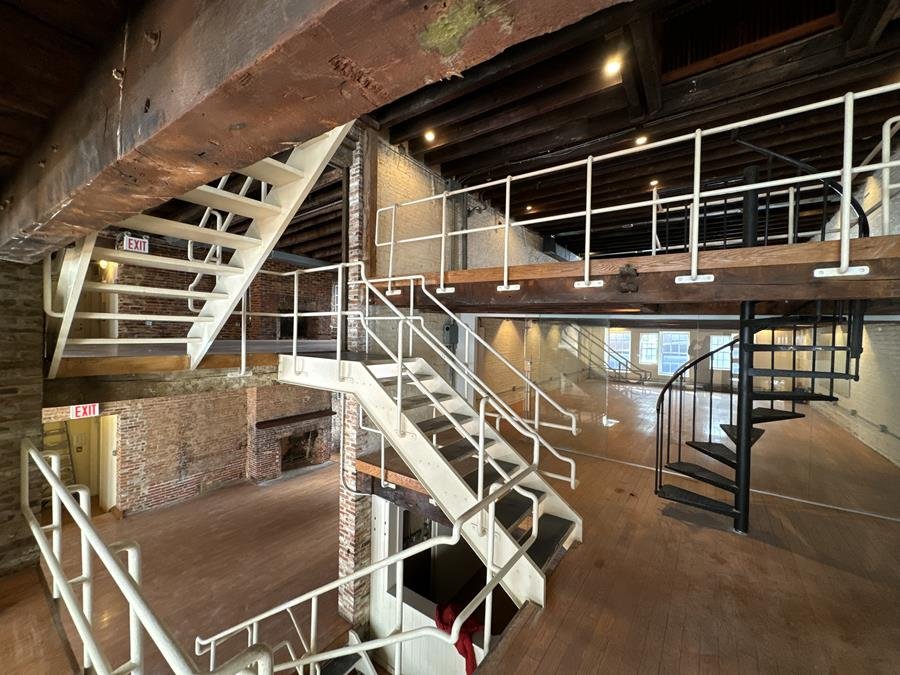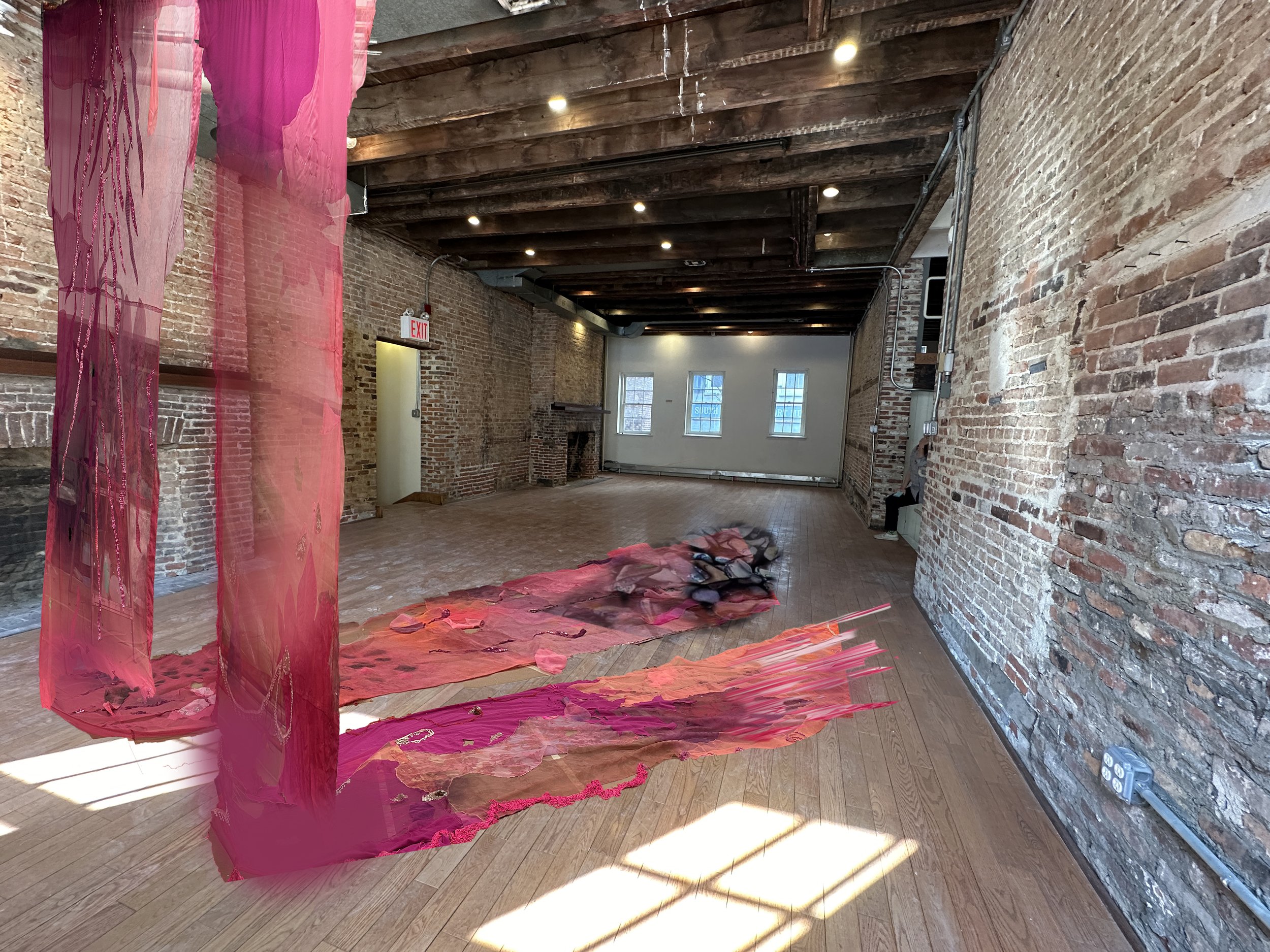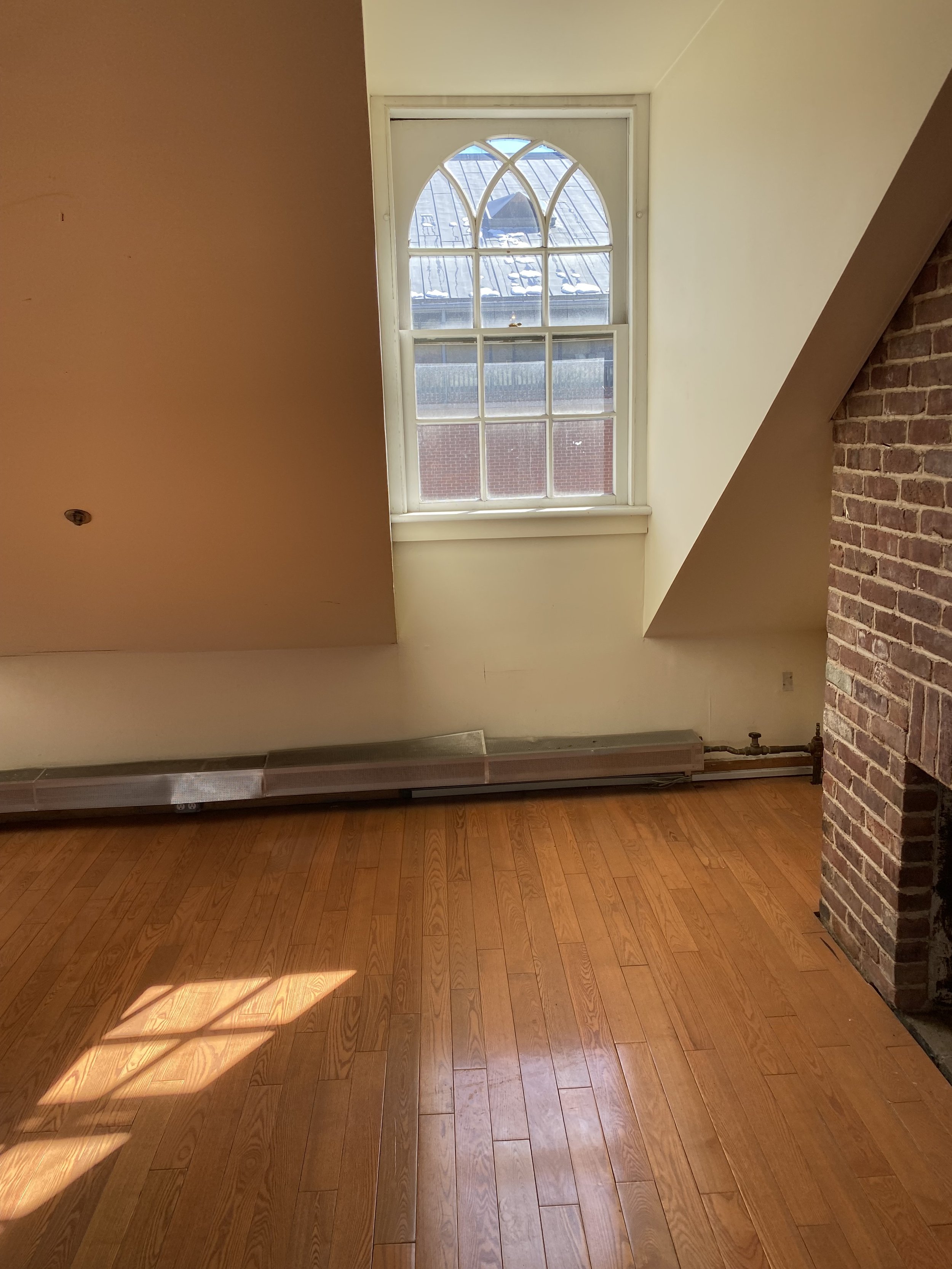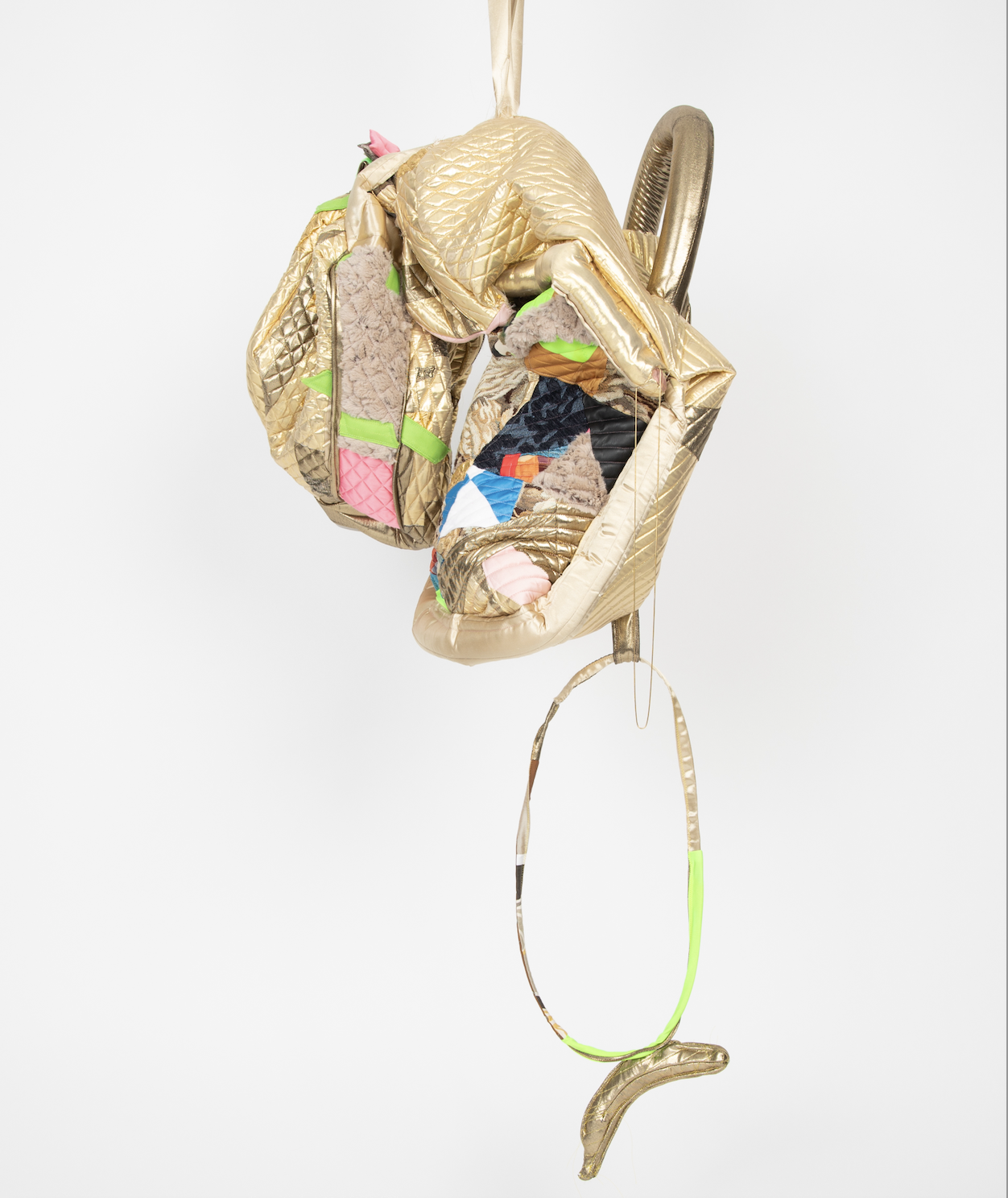THE GOLDEN THREAD: A Fiber Art Exhibition
April 26 – May 12
207 Front Street at the South Street Seaport
Essay by Christian Viveros-Fauné
April 25 (invitation only) Days & Hours: Tuesday - Sunday 12-7pm Free and open to the public.
BravinLee Programs is very pleased to present The Golden Thread: A Fiber Art Exhibition. The exhibition includes 61 artists and over a 100 artworks, including 10 site-specific installations
207 Front Street is 10,000 sq ft landmarked 4 story structure, erected in 1793, in the heart of the South Street Seaport located between Beekman and Fulton Streets.
It is not wheelchair or stroller accessible.
Thanks to: Belle Harbour Capital llc and Seaport Associates Lp.
Fanny Allié
Tania Alvarez
Lisha Bai
Kim Beck
Lisa Beck
Naomi Ben-Shahar
April Bey
Capucine Bourcart
Louise Bourgeois*
Julián Chams
Willie Cole*
Liz Collins
Orly Cogan
Bonnie Collura
Melissa Dadourian
Alexandria Deters
Angelo Filomeno
Robert Forman
Christina Forrer
Sarah George
Iva Gueorguieva
Jeila Gueramian
Heide Hatry
Rachel Hayes
Elana Herzog
Camille Hoffman
Scott Hunt
Sara Jimenez
Robin Kang
David Kramer
Juliet Karelsen
Tamara Kostianovsky
Meg Lipke
Kandy G. Lopez
LoVid
Emil Lukas
Fabian Marcaccio
Ray Materson
Suchitra Mattai
Erin LeAnn Mitchell
Wangechi Mutu
Christopher Myers
Mary Tooley Parker
Nereida Patricia
Amanda Phingbodhipakkiya
Courtney Puckett
Jacqueline Qiu
Joy Ray
Elaine Reichek
Michael Sylvan Robinson
Allison Reimus
Louise E. Schwartz
Jean Shin
David B. Smith
Sagarika Sundaram
Melissa Webb
Amy Wilson
Jonas Wood*
Natalie Collette Wood
Woolpunk
Sarah Zapata
*BravinLee editions
The Golden Thread: New Adventures in Textile Art
Among the oldest forms of human technology, weaving was invented some 27,000 years ago in the Paleolithic era. Commonly accepted notions of textile or fiber art—the two terms are used interchangeably—arrived eons later, in the 1950s, when pioneering creator-craftsfolks began expressively binding fibers into nonfunctional objects by means of knotting, twining, plaiting, coiling, pleating, lashing, interlacing and weaving. Ancient in origin but utterly modern in its uses, textile art has flourished mightily since then—but perhaps at no time like today.
A practice that encompasses embroidery, tapestry, quilting, carpet design, and much, much more, textile art has undergone a renaissance over the past century. Artists of all types and from every corner of the planet have pushed hard on what can be termed textile, and even harder on the ways in which textile can be considered art. Once marginalized from the hidebound concept of “fine art” because of its functional origins, textile art now appears poised to take advantage of its previous outsider status—principally by asking questions of art’s presumed hierarchies.
Among these queries are the following: What does it mean to deploy the golden thread of textile’s tradition? Who can or should make it? Are textiles the overwhelming terrain of previously subaltern cultures or subcultures? How are textiles enmeshed with power? And, how can the medium’s previously outcast status at once be challenged and reclaimed?
As artworks that employ fibers have proliferated, a new creative logic has emerged: textiles can be as radical as any other medium, often much more so. Informed by gendered, indigenous and pre-colonial histories and practices, thread-based art acquires special power when addressing legacies of injustice, exploitation and extraction. Another strength: as material, textiles are freighted with a tensile metaphorical language—one that mobilizes ideas of interlacing, interweaving and entanglement—thereby opening up new arenas of expression across cultures. A medium with a special purchase on themes of ancestry, community, belonging and engagement, art made with textiles additionally voices the condition of Otherness in uniquely powerful, sometimes enveloping and even synesthetic ways.
The exhibition The Golden Thread shines a light on a group of exemplary artists who have made of the radical use of textiles their frequent or dedicated métier. Hailing from different parts of the U.S. and beyond, their wildly varied artworks occupy four floors of a landmark 18th century warehouse previously used to store, among other period wares, bails of cotton and bolts of fabric arriving and departing New York’s South Street Seaport. Repurposed by the exhibition’s organizers, Karin Bravin and John Lee—longtime New York dealers and champions of textile art—the building’s 10,000 square feet have been marshaled to array both discrete objects and commissioned installations. As befits a showcase rather than an exhaustive thematic or historical survey, the artworks featured in The Golden Thread run the gamut—from foursquare pictures to three-dimensional artworks, from freestanding sculptures to editioned rugs, from hanging tapestries to immersive environments.
The Golden Thread brings together over 100 artworks by 61 international artists and artist collectives that treat textiles as a medium perfectly tailored to our distracted and anxious times. Like technologists of a largely overlooked past, the exhibition’s creators prize a set of analog processes during an age dominated by the internet. In a world filled with countless images—and with images referring to images—that are captured, edited, and published at hyper speeds, their contributions help establish the idea of a handmade and newly subversive kind of “software.” Eschewing presentations of “content” that are digital, cold, remote and exploitative, the exhibition features artworks warmed by the heat of a medium that is exceedingly familiar yet frequently turned surprising and novel through its universality.
Expanding across time and geography, The Golden Thread presents a number of themes and approaches that together explore the role of textiles in the practices of its individual artists. Among these are works by artists that highlight the subversive nature of stitching (Tania Alvarez, Lisha Bai, Orly Cogan, Alexandria Deters, Angelo Filomeno, Christina Forrer, David Kramer, LoVid, Kandy G Lopez, Joy Ray, Elaine Reicheck, Louise E. Schwartz, Amy Wilson); the relationship between textiles, the body and nature (Kim Beck, Lisa Beck, Naomi Ben Shahar, Capucine Bourcart, Louise Bourgeois, Bonnie Collura, Sarah George, Rachel Hayes, Elana Herzog, Juliet Karelsen, Tamara Kostianovsky, Wangechi Mutu, Jacqueline Qiu, Michael Sylvan Robinson, Jonas Wood); the immersive and sculptural potential of textiles (Meg Lipke, Sagarika Sundaram, Melissa Webb, Iva Gueorguieva, Jean Shin, Jeila Gueramian, Amanda Phingbodhipakkiya, David B. Smith, Natalie Collette Wood); the inspirational use of discarded, found and innovative materials (Fanny Allié, Julián Chams, Liz Collins, Melissa Dadourian, Heide Hatry, Emil Lukas, Fabian Marcaccio, Ray Materson, Mary Tooley Parker, Courtney Puckett, Allison Reimus); and the medium’s enormous capacity for witness and historical reflection (April Bey, Willie Cole, Robert Forman, Camille Hoffman, Scott Hunt, Sara Jimenez, Robin Kang, Suchitra Mattai, Christopher Myers, Erin LeAnn Mitchell, Nereida Patricia, Woolpunk, Sarah Zapata).
Naturally, most of the artworks on view in this exhibition touch on these and other concepts at once. Instances of delicately stitched cultural subterfuge, their adaptations of age-old textile traditions don’t merely challenge dominant narratives about fine art, they do so while exhibiting the kind of optimism that emerges when creators resurrect what others consider as castoff ideas. In a word, the artists in The Golden Thread are virtuosos: armed with conceptual rigor, formal experimentation and reinvigorated meaning, they achieve mastery with everyday materials. As with other expert artists’ use of media—think painting, drawing or sculpture—they endeavor to do so in ways in which support and embellishment become indistinguishable.
“Life today is very bewildering,” pioneering textile artist Anni Albers wrote in 1938—the observation could easily have been penned during the incertum annus that is 2024—“We must come down to earth from the clouds where we live in vagueness and experience the most real thing there is: material.”
In keeping with Albers’ statement, this ambitious exhibition grounds a tradition at a peak of effervescence, while taking the golden thread of textile art for a dazzling spin along a prized section of New York’s historic waterfront. The story it tells is equally sparkling. In a nutshell, it involves nothing less than an expansive attempt to highlight the liveliest and most generous possibilities of a medium in full flower.
Christian Viveros-Fauné
Brooklyn, 2024
207 Front Street is one of the oldest buildings in the South Street Seaport, built in 1797. It is an outstanding example of mercantile architecture, with a twelve-foot diameter hoist wheel, peaked roof, Flemish Bond brick facade, and heavy timber floor framing. The building was owned and operated by some of the most prominent mercantile families in New York City. Added to the National Register of Historic Places in 1972, 207 Front Street has never before been open to the public. Special Thanks to Seaport Associates LP.
For the last 12 years BravinLee Editions has been producing limited editioned, hand-knotted rugs designed by artists. The Golden Thread will include editions by Wangechi Mutu, Jonas Wood, Louise Bourgeois and will be debuting its newest rug edition, Original Sin by Willie Cole.
